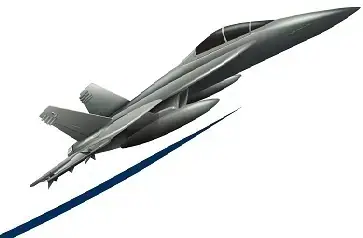In the realm of high-speed travel, Mach 4 speed represents an astonishing achievement in pushing the limits of velocity. This remarkable concept, rooted in the principles of aerodynamics and the measurement of speed relative to the speed of sound, has captivated the imagination of scientists, engineers, and aviation enthusiasts alike. In this article, we will delve into the fascinating world of Mach 4 speed, exploring its meaning, significance, and the technological advancements that have made it possible.
Understanding Mach 4 Speed
Mach 4 refers to a velocity four times the speed of sound, commonly denoted as Mach 4 or M4. The speed of sound, also known as Mach 1, varies depending on factors such as temperature and altitude. At sea level and a temperature of 20 degrees Celsius (68 degrees Fahrenheit), Mach 1 is approximately 1,225 kilometers per hour (761 miles per hour) or 340 meters per second (1,125 feet per second).
To reach Mach 4, an object must achieve a velocity four times that of the speed of sound in the given conditions. This translates to approximately 4,900 kilometers per hour (3,045 miles per hour) or 1.36 kilometers per second (0.84 miles per second). Such extreme speeds require advanced engineering and cutting-edge technology to overcome numerous challenges, including aerodynamic drag, heating effects, and propulsion systems capable of generating immense thrust.
Technological Marvels Enabling Mach 4 Speed
Several impressive machines have been developed to harness the power of Mach 4 speed. Each represents a pinnacle of engineering and innovation. Let’s explore some of the notable examples:
SR-71 Blackbird: The iconic SR-71 Blackbird, developed by Lockheed Martin, is one of the fastest aircraft ever built. Capable of reaching speeds exceeding Mach 3.2 (2,455 miles per hour), this supersonic reconnaissance aircraft operates at high altitudes and gather intelligence with unparalleled speed and precision.
X-43: The X-43 achieved an astonishing speed of Mach 9.6 (7,346 miles per hour). It was an experimental unmanned aircraft developed by NASA. This groundbreaking achievement made the X-43 the fastest aircraft ever recorded. It showcased the potential for hypersonic travel. It also paved the way for future advancements in aerospace technology.
F-22 Raptor: The F-22 Raptor, a fifth-generation stealth fighter jet, boasts remarkable capabilities, including the ability to fly at speeds exceeding Mach 2 (1,534 miles per hour). Its advanced aerodynamics, coupled with powerful engines, enable the aircraft to outmaneuver and outpace most adversaries in the skies.
X-15: The X-15, a rocket-powered aircraft, set multiple speed records during its flight tests in the 1960s. It reached a maximum speed of Mach 6.7 (5,157 miles per hour). Thus it surpassed the boundaries of conventional aircraft. Also, it pushed the limits of human exploration and technological advancement.
F-35 Lightning II: Last but not least, the F-35 Lightning II. It combines advanced stealth technology, agile maneuverability, and a top speed of Mach 1.6 (1,243 miles per hour). It is a versatile multi-role fighter jet. Undoubtedly, it represents the cutting edge of military aviation, demonstrating the fusion of speed, precision, and advanced avionics.
Summary
The pursuit of ever-increasing speeds in aviation serves various purposes. It enables rapid transportation, reduces travel times, enhances military capabilities, and facilitates scientific research. The ability to reach Mach 4 speed signifies a mastery of engineering. It showcases the relentless human quest to push the boundaries of what is possible. Achieving Mach 4 speed opens up new frontiers and paves the way for advancements in various fields.








